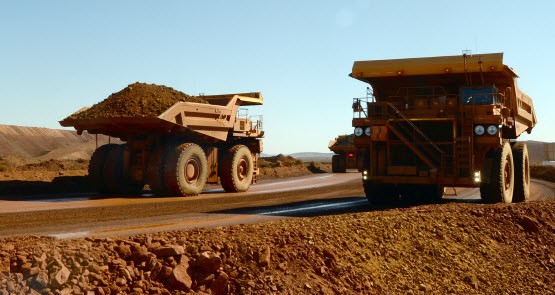
While there’s been considerable hand-wringing from the media about yesterday’s capital expenditure figures from the Australian Bureau of Statistics, it doesn’t tell us a whole lot new about the state of the economy and is no reason for alarm.
Yes, private capital investment fell sharply in the September quarter as the mining and resources boom went cold: the 9.2% slide in investment in the quarter was more than double the 4.4% drop (revised from 4% originally) in the June quarter and much larger than the market’s forecast for a 3% fall. But we’ve known for years that the tail end of the mining investment boom was going to drive down investment over an extended period, and that is exactly what’s been happening. And if we needed it, we got some forewarning of this on Wednesday from the construction data, which showed engineering construction falling nearly 12% in seasonally adjusted terms in the September quarter. Coming on top of a 3.7% slide in the total value of construction work in that quarter (despite housing construction hitting an all-time high), third-quarter GDP has taken a couple of heavy body blows.
But looking forward, yesterday’s prospective data on investment planned for the whole of the current financial year continues to build, with the fourth of the ABS’s rolling estimates for investment in 2015-16 showing a rise of 4% from the previous estimate, to a still considerable $120.353 billion. And that’s on top of a jump in intended investment back in estimate three, of 9.9%, the largest in five years. These consecutive, substantial rises in estimates three and four will hearten the Reserve Bank, which has been looking for a continuation of the small rebound in non-mining investment.
Better yet, the 4% rise in the fourth estimate is being driven across the board: manufacturing investment is up 1.9% from the third estimate, other selected industries expect a 6.1% jump in investment from estimate 3 and, most surprisingly of all, mining is saying the level of planned investment this year will be up 2.3% compared to the third estimate. That is still a considerable $56 billion. Manufacturers are planning to invest just over $8 billion at this stage and other selected industries say they will invest $56 billion.
Looking at the first estimate issued in the December quarter report from the ABS, planned mining investment is down $4 billion, but manufacturers have lifted their investment intentions by a solid $2 billion, and other selected industries have lifted theirs by around $13 billion. So the investment picture is a bit better than expected earlier this year and a lot better than at the time of the first estimate of around $109 billion, and the final rough estimate for 2014-15 of around $150 billion.
In three month’s time, we get the first estimate for 2016-17 private capex. That will be a very important indicator because many economists believe the collapse in mining investment will have run its course in about a year’s time (as does the RBA) and are looking for a solid rebound in 2016-17.
And don’t forget, the RBA has pointed out that the ABS capex data do not capture anywhere near 100% of businesses’ spending plans, such as in the services sector. The RBA and others have been telling us for months now that the lower dollar has had a dramatic impact on activity in that sector. It is reasonable to think that is also happening on the investment side. And while investment in services is small, in aggregate it is a solid figure given the hundreds of thousands of small medium companies in the sector. Here’s what the RBA said in the minutes of the November board meeting:
“Recent data indicated that survey measures of business conditions in the non-mining sector had remained clearly above their long-run average levels, particularly for services. Support provided to the economy following the depreciation of the exchange rate was particularly apparent in the sizeable contribution to growth from net service exports over the year to date. Growth in net service exports was expected to continue to boost growth in output over the forecast period. These developments had been accompanied by significant growth in employment in the services sector but, given that parts of that sector tend to be less capital-intensive, there had been little effect on investment from the strength of business conditions.”
Chill out, Glenn Stevens told markets looking for hints on interest rate movements on Wednesday, until early next year. The’s pretty good advice in response to yesterday’s data, as well. Don’t be caught out mistaking what happened in September quarter for what’s happening now and across the rest of 2015-16, and into 2017.







Crikey is committed to hosting lively discussions. Help us keep the conversation useful, interesting and welcoming. We aim to publish comments quickly in the interest of promoting robust conversation, but we’re a small team and we deploy filters to protect against legal risk. Occasionally your comment may be held up while we review, but we’re working as fast as we can to keep the conversation rolling.
The Crikey comment section is members-only content. Please subscribe to leave a comment.
The Crikey comment section is members-only content. Please login to leave a comment.